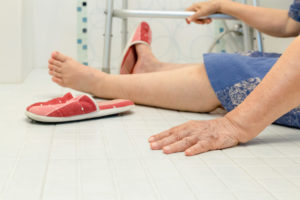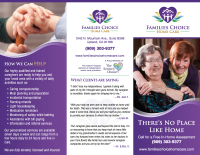Every year, one out of every four Americans over the age of 65 years had a fall. Falls like this are the main cause of fatal injury in the elderly, and 2.8 million injuries are treated in hospitals in just one year on average.
If there is an elderly person in your life, needless to say, you want to do everything you can to prevent falls like this from happening. If you have a senior that’s aging in place in their home, there are certain fall precautions you can work on that could actually help save their life.
Seven Fall Precautions to Keep Your Elderly Loved Ones Safe
When you’re working with fall precautions, every home is different. Go room by room and assess the area to see if it could be a potential safety hazard. Reducing the number of places where your loved one could fall will help you feel more secure as well.
Keep an Ear to the Ground
And keep an eye to the ground. Because of reduced mobility, some seniors tend to shuffle their feet more than other walkers. Slippery hardwood floors can be a major risk.
Covering hardwood floors with secured carpet can help reduce falling risk. Rugs that can move or slip are a major cause of falling, so you might want to remove them entirely.
The rule of thumb is that everything should be anchored to the ground, and non-slip. Even the most agile of people can trip on bunched up rugs, so it’s all the more a hazard for an elderly person.
Look at the Stairs
Stairs can be a huge obstacle for someone who is aging in place. To make your stairs safer, install railings that can be gripped onto for stability.
Install non-slip strips on the stairs if they’re not covered in carpet. Staircase accidents are one of the major causes of deaths not just for the elderly, but for people of all ages. Making them as easy to maneuver as possible could save a life.
Get a Help Button
In case your loved one falls and no one is home, you should consider getting a help button where they’re able to reach someone at all times.
A cell phone might do the trick, but a help button will be on their person at all times and is easy to press and alert medical personnel.
Prepare the Bathroom
About 80 percent of falls that seniors experience happen in the bathroom. That means your bathroom needs to be looked over with a very keen eye.
You might want to consider remodeling your bathroom so that it’s made for aging in place. If budget allows, you can install a walk-in shower with a bench where your loved one can sit instead of standing, which can reduce the risk of a fall.
Install shower bars on every wall so that they can have somewhere to brace themselves or hold onto while showering.
Make Open Spaces
Keeping the home easy to navigate also helps reduce fall risks. End tables or other furniture that get in the way of ease of access should be rethought or moved. The easier a room is to move around in, the safer it is.
Items that are going to be used daily should be easy to reach an access. Items shouldn’t be stored on high shelves where an elderly person has to stretch to reach them, because this is a common way that people fall.
Ask the elderly person in your life what things they will need to use commonly, and figure out a plan where they will be easily accessible so that they don’t have to go out of their way to get them.
Outlets and plugs should not be covered so that they don’t have to maneuver and bend to plug something in. Things like keys, clothes, pots, and pans should all be something that are ready to reach without having to do any additional work or bend and reach in a way that might result in an accident.
Up the Lighting
Dim lighting can lead to falls because it can be harder to see obstacles in the way that might cause an accident. Especially in areas like the stairs and the bathrooms, having adequate lighting is an important safety factor.
Night lights can help lead the way if your senior needs to get up in the middle of the night.
Consider Home Care
Someone who is a professional home care provider can come in and assess your home to see how you can prevent elderly falls. They’re well-trained and have seen many situations and how falls happen, so might be able to catch something that you didn’t when you were looking at your home.
Not only will they be able to look at your home and advise on how to make it safe, in-home caregivers will also be there to assist with tasks from day to day. Having help will reduce their risk of injury and the chance they tried to perform a task that may have been dangerous.
If a fall did unfortunately happen, it’s shown that seniors are more comfortable healing at home. If a caregiver situation allows them to stay at home instead of a hospital or a rehabilitation facility.
Read More: In-Home After-Surgery Care for Seniors
Going the Extra Mile
79 billion in medical costs each year goes to helping people recovering from falls. Families Choice Home Care has a fall prevention program that’s helping to make that number go down.
You or your senior loved one can participate in the presentation, which can be presented to large and small groups. It lasts from twenty to sixty minutes and covers how to reduce the risk of falls, how to tell if someone is at risk for a falls, what to do when someone falls, and more.
Don’t wait until you’ve had a serious incident to do something about protecting the people you love. Focus on fall precautions to have some peace of mind. Stay safe and put a plan into action before anyone gets hurt.






